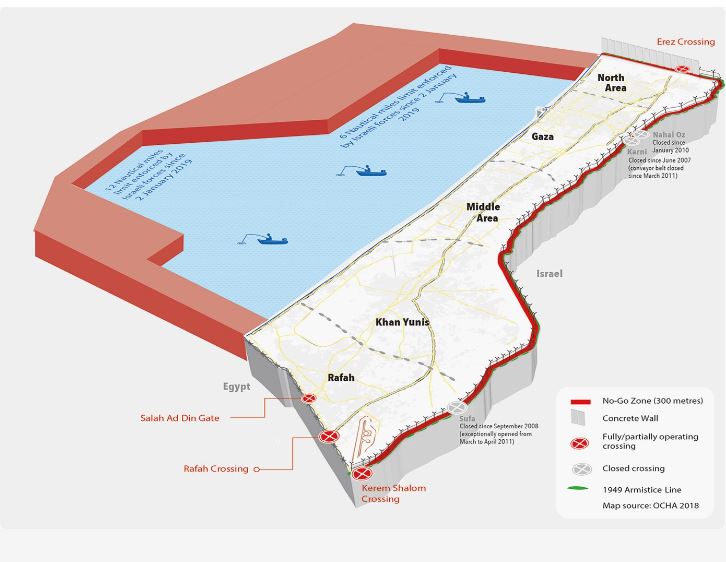Despite a complete withdrawal in 2005, Israel maintains control over the maritime, air, and land borders in the Gaza Strip to prevent the smuggling of weapons to Hamas in the region. The movement of people in Gaza is tightly controlled by both Egypt and Israel, with only two border crossings in a 365-square-kilometer area of land.
The Gaza Strip is bordered by Israel on two sides and shares a border with Egypt. The western end of Gaza faces the Mediterranean Sea, where the Israeli Navy enforces restrictions on the movement of people up to 12 nautical miles from the shore.
Arms smugglers drop weapons along the Mediterranean Sea’s shore, which are then supplied to Hamas. Despite maritime control by the Israeli Navy, these arms suppliers have succeeded in delivering weapons to the group. Additionally, arms smugglers use tunnels as an alternative route to supply weapons to Gaza.
Gaza shares a border with Egypt, and tunnels are built to transport weapons to the region. This tunnel network is used to deliver weapons such as Fajr-3, Fajr-5, and M-302 rockets from Iran and Syria.

The Fajr-3 is an Iranian-built unguided surface-to-surface artillery rocket with a range of 43 kilometers. The Fajr-5 has an extended range of 75 kilometers and is equipped with a 90-kilogram high explosive warhead.
The M-302 rocket, also known as Khaibar-1, is built by Iran and is a long-range unguided rocket used by Hamas. It is reportedly supplied by Hezbollah.
In the first wave of attacks on Israel, over 5,000 rockets were fired from Gaza. Over the years, Hamas has developed its crude rocket technology to extend its range, and weapons reportedly supplied by Iran were used to overwhelm Israel’s Iron Dome air defense system.
While Iran has backed Hamas’ Operation Al-Aqsa Flood, it has denied direct involvement in the war and rejected Israel’s claims of funding the operation. The U.S. State Department in 2021 stated that Hamas receives training, funding, and weapons from Iran, with reports indicating that 70% of Hamas’ total funding comes from Iran.
Several reports also suggest that U.S.-built weapons supplied from Afghanistan by the Taliban are being used by Hamas. After the U.S. ended its operations in Afghanistan in 2021, the Taliban took control of the country, gaining access to a stockpile of U.S. weapons.
The United States has shown support for Israel by deploying warships and aircraft closer to the region, including a Carrier Battle Group led by the USS Gerald R Ford, to help defend Israel’s coastline along Gaza and prevent the supply of weapons.
The U.S., a major supplier of arms to Israel, reaffirmed its support for Israel and warned other parties to stay out of the conflict following a surprise attack from the Gaza Strip.


